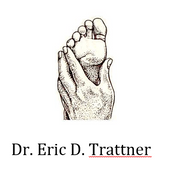
Construction workers spend every day climbing, walking on uneven surfaces, and carrying heavy materials. This stressful work is particularly hard on the feet, so foot injuries are a common issue. Below is a helpful guide, including podiatrist-approved preventive steps, so you and your team work safely.
Injuries
Foot injuries range from general pain to broken bones. Poor-fitting and unsupportive shoes are also a cause of general pain. Your feet will absorb too much pressure when you walk. It may inflame your heel tendons (plantar fasciitis) or bruise soft tissue. Blisters are common when the shoe rubs against wet skin, and you may develop a fungal infection if your feet don’t dry.
Weak ankle support also causes sprains. Walking on sloped roofs or uneven ground overstretches the ankle joint. Rolling or twisting can hyperextend or tear the ligaments holding the bones together. All of these injuries can leave you sidelined for days, weeks, and even months, which is why prevention is essential.
Prevention

Start by purchasing the right shoes. Choose a waterproof, steel-toe design to prevent moisture damage and impact-related injuries. Anti-perforation soles will protect against nails and sharp debris, and traction will ensure good footing on uneven or slippery surfaces.
When you try on a shoe, stand up and walk around. There should be a 3/8- to 1/2-inch gap between your longest toe and the end of the shoe. Your toes shouldn’t feel compressed, and your heel shouldn’t slip when you walk. Look for boots with ankle supports and ask a podiatrist about custom inserts for added cushioning.
Take regular breaks and check your feet for blisters or cuts. Clean these with a sterile wipe from the first aid kit and apply a bandage to prevent infection.
Treatment
A podiatrist is your best resource for treatment. They can surgically remove bunions or ingrown toenails and prescribe antibiotics for infections or nail fungus. Sprains and pains require rest and support.
Follow the RICE method (rest, ice, compress, elevate). Stay off your feet after work and apply an ice pack to reduce swelling. After, put a compression wrap or sleeve over the injured area and elevate it while you rest. Manage pain with over-the-counter medication. If it worsens, speak with a podiatrist. Fractured bones and torn ligaments may require surgery or a cast.
If you’re already living with foot injuries, Dr. Eric D. Trattner of Cleveland, OH, can help. This podiatrist uses state-of-the-art diagnostic and treatment tools to keep patients mobile. Dr. Trattner addresses heel and arch pain, hammertoes, heel spurs, and common injuries, and he will create a custom treatment plan. Call (440) 333-5350 to schedule a consultation and visit his website to learn about his foot and ankle surgeries.
About the Business
Have a question? Ask the experts!
Send your question

